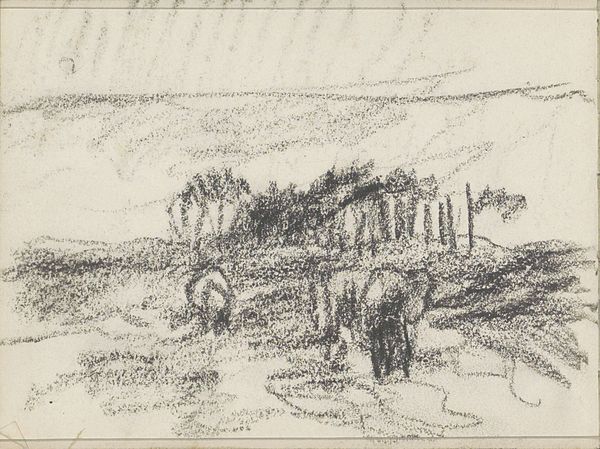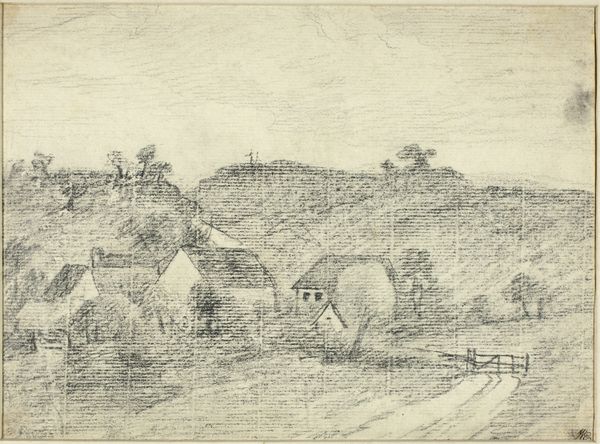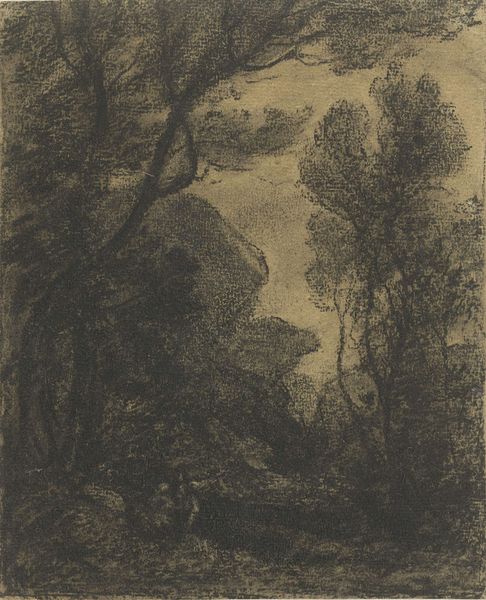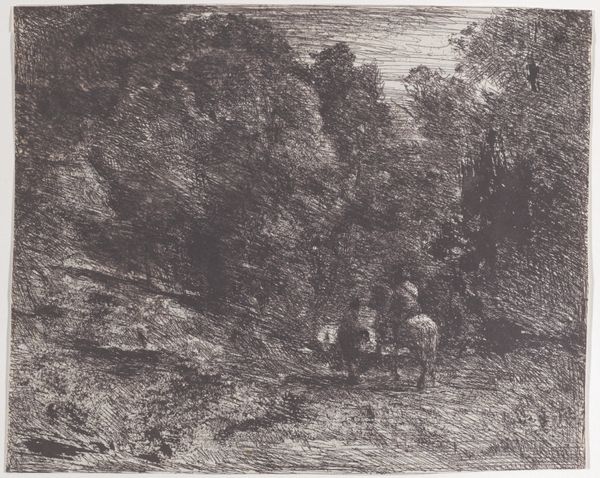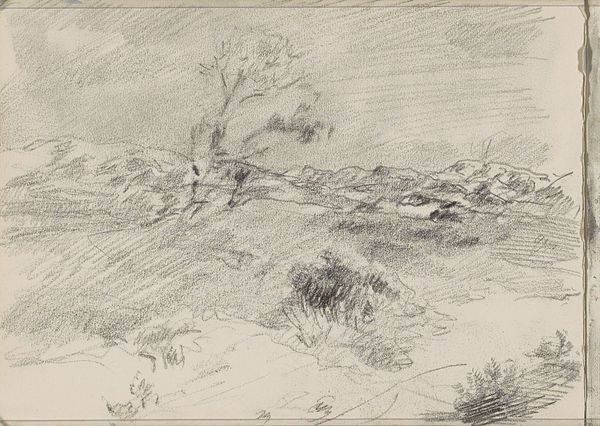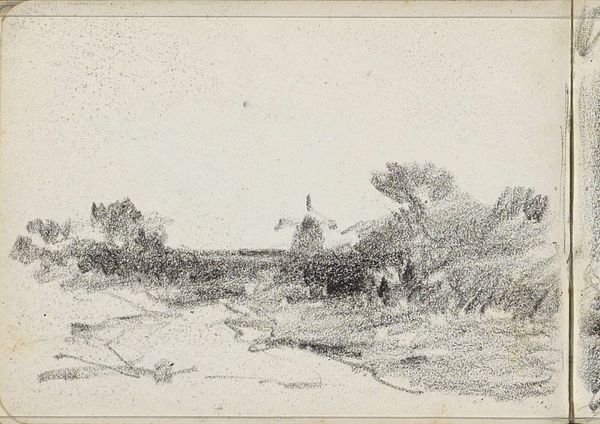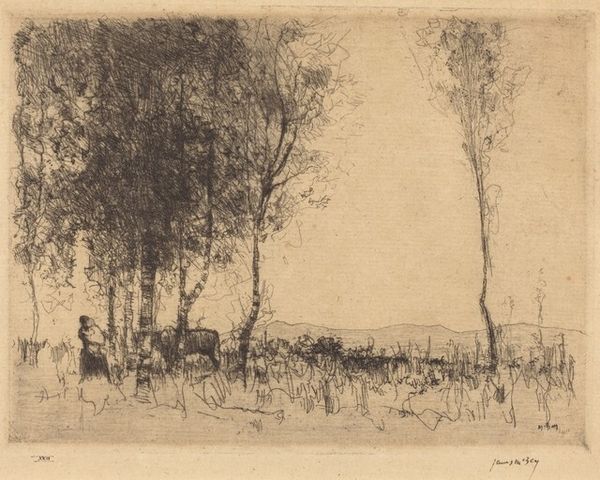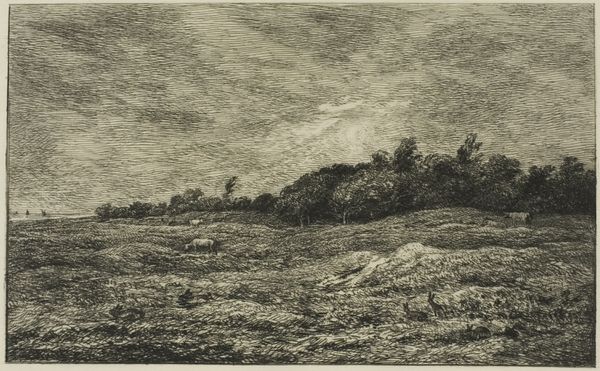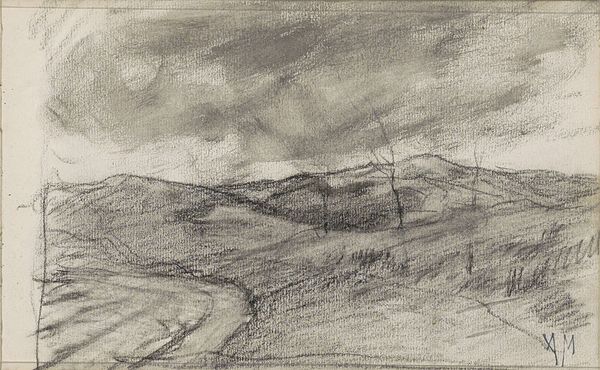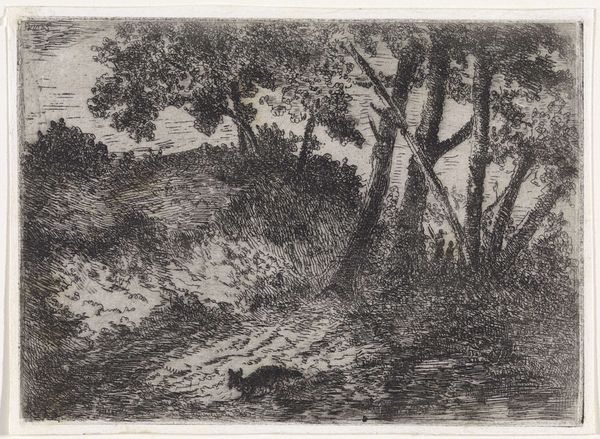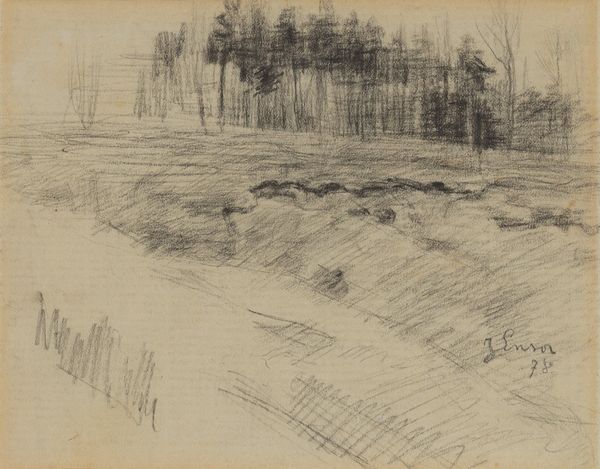
painting, oil-paint, impasto
#
tree
#
cliff
#
abstract painting
#
painting
#
oil-paint
#
landscape
#
house
#
impressionist landscape
#
oil painting
#
impasto
#
rock
#
forest
#
mountain
#
seascape
#
cityscape
#
post-impressionism
#
building
Copyright: Public domain
Curator: Let’s turn our attention to Henri Martin's "Labastide du Vert in Afternoon". It presents us with an expansive vista of a small town nestled within a rolling landscape. Editor: It strikes me immediately as quite tactile, almost like looking at velvet. There's such a density to the impasto; you can almost feel the layers of paint. Curator: Yes, Martin's application of oil paint is quite characteristic of the Post-Impressionist style, emphasizing individual strokes to build form. And, this work reveals his interest in depicting the French countryside, capturing the effects of light and atmosphere. Editor: The way he handles light here is remarkable. It's not just illumination; it's a physical substance. You see the afternoon sun not just on the grass, but also giving structure to the houses. How do you think he achieved such luminosity with oil? Curator: Well, think about the socio-political landscape then: There was a growing art market, independent exhibitions… which empowered artists like Martin to push the boundaries of traditional painting, moving away from academic precision towards a more expressive handling of materials. Editor: And what a fascinating landscape. Houses and vegetation appear to have grown spontaneously from the cliffs! The work emphasizes the connection between people, architecture and landscape as aspects of material culture. What would people, including the artist, have actually seen and interacted with on site? Curator: It's a great example of the public role of art, particularly landscape painting, at the turn of the century: Offering a nostalgic, idealized view of rural France. The rising urbanism and industrialism was leading to longing and appreciation for the unspoiled countryside. Editor: Do you think the choice of oil paint factors into it? I mean, there's an association with value, status, permanence… things that fit into that idyllic view. Imagine if it was watercolour! Curator: True. Also, this piece fits into Martin's body of work and artistic concerns, contributing to a broader cultural narrative about French identity and regional pride. Editor: I am struck again by the physicality. It brings history to life. It is an enduring scene that is so fleeting. Curator: Absolutely, a piece to remind us of the complex interplay between art, history, and the landscape itself.
Comments
No comments
Be the first to comment and join the conversation on the ultimate creative platform.
